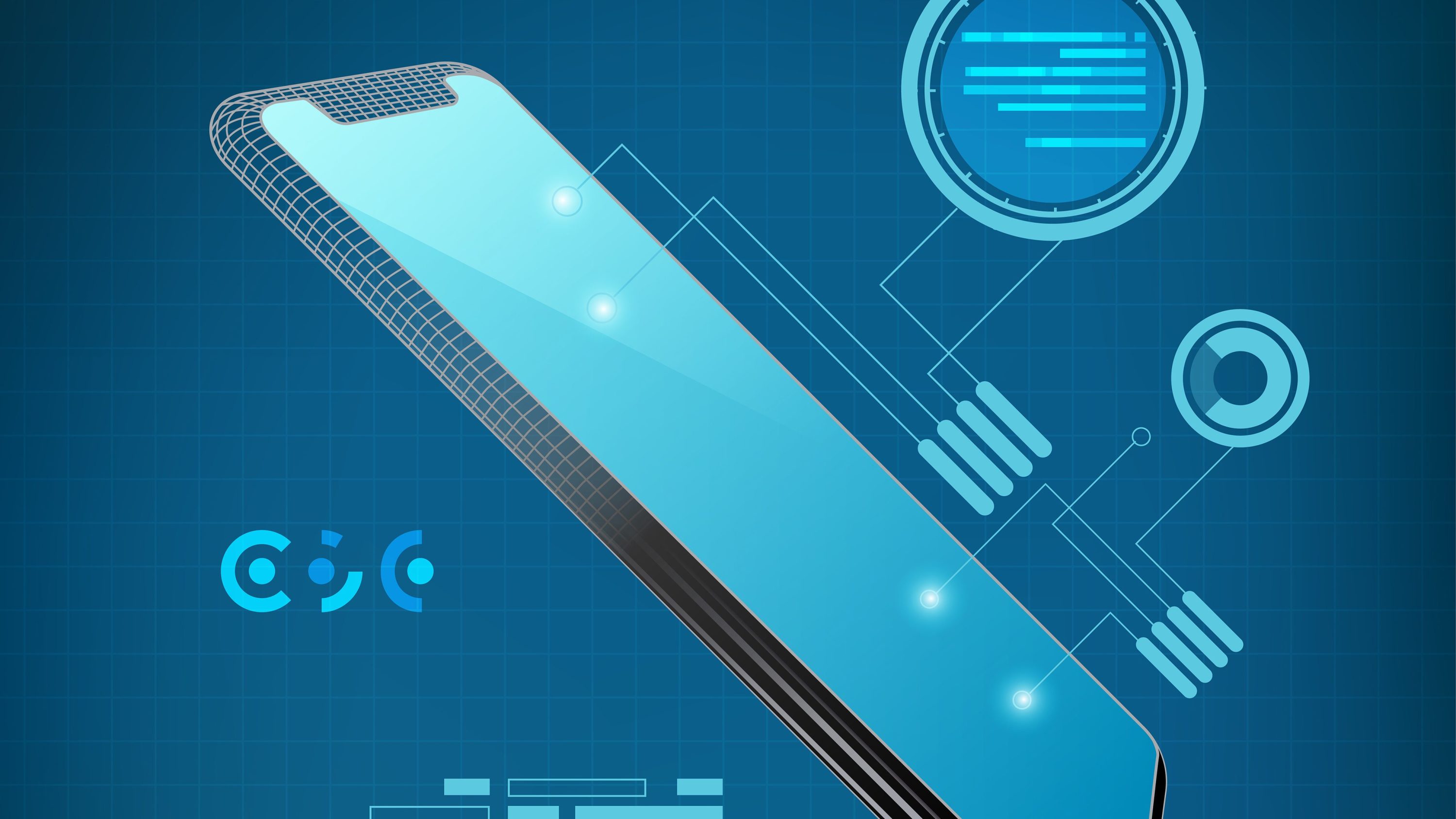Emerging Smartphone Technologies: A Glimpse into the Future of Mobile Innovation
The smartphone industry has evolved rapidly over the past decade. From simple communication devices to powerful mobile computing platforms, smartphones are now at the heart of our daily lives. With the constant demand for faster performance, better connectivity, and advanced features, smartphone manufacturers are always looking for new ways to innovate. As we look ahead, a number of emerging smartphone technologies are poised to redefine how we interact with our devices, experience the digital world, and solve real-world problems.
In this article, we will explore some of the most exciting emerging technologies in smartphones, ranging from foldable screens to 5G connectivity and beyond. We will also look at how these technologies are shaping the future of mobile devices and their impact on everyday life.

1. Foldable Screens: The Future of Mobile Displays
What Are Foldable Screens?
One of the most groundbreaking advancements in smartphone design is the development of foldable screens. Unlike traditional smartphones, foldable devices feature flexible displays that allow the screen to fold, enabling users to carry a larger screen in a more compact form. This new form factor is revolutionizing smartphone design and user experience.
The Benefits of Foldable Phones
Foldable smartphones offer several significant advantages over traditional devices:
– Larger Screens: By folding the screen, manufacturers can create smartphones with larger displays without compromising portability.
– Multitasking Capabilities: With a larger display, users can view multiple apps side by side, enhancing productivity.
– Innovative Design: Foldable smartphones push the boundaries of design, offering a sleek and futuristic look.
Popular devices like the Samsung Galaxy Z Fold and Huawei Mate X have already embraced foldable technology, showcasing their potential in the market.

Challenges Ahead
Despite their exciting prospects, foldable smartphones come with a few challenges:
– Durability: The folding mechanism must be robust enough to withstand frequent use.
– Cost: Foldable smartphones are currently more expensive than their traditional counterparts, making them less accessible to the average consumer.
However, as technology matures, the cost of foldable devices is expected to decrease, and manufacturers are focusing on improving durability for longer-lasting performance.
2. 5G Connectivity: The Next Frontier in Mobile Speed
What is 5G?
5G refers to the fifth generation of wireless technology, offering much faster data speeds, lower latency, and greater connectivity than its predecessor, 4G LTE. While 4G made high-speed mobile internet possible, 5G promises to take mobile networks to the next level by enabling speeds that are up to 100 times faster than 4G, with near-instantaneous data transfer.
How 5G Will Transform the Smartphone Experience
- Faster Download and Upload Speeds: With 5G, users can download and stream content in seconds, making it ideal for heavy data users, gamers, and content creators.
- Improved Video Streaming: The increased bandwidth will support high-definition video streaming, including 4K and even 8K video, without buffering.
- Lower Latency: Latency refers to the delay between sending and receiving data. With 5G, latency is significantly reduced, which is crucial for applications like augmented reality (AR) and virtual reality (VR), where real-time interaction is essential.
As more 5G networks are deployed globally, smartphone manufacturers are integrating 5G-capable modems into their devices, ensuring that users can take advantage of the enhanced mobile experience.

The Global 5G Rollout
Although 5G networks are still being rolled out in various regions, 5G-enabled smartphones are already becoming mainstream. The iPhone 12 and newer models from Samsung, Google, and other manufacturers have built-in 5G support, allowing users to access faster networks in areas where 5G is available.
3. Artificial Intelligence (AI) and Machine Learning Integration
AI in Smartphones: What’s Changing?
Artificial intelligence (AI) is rapidly becoming a fundamental part of smartphone functionality. AI is transforming everything from camera performance to battery management and voice assistants. With machine learning, smartphones can learn from user behavior and adapt to their needs over time, providing a more personalized experience.
AI-Powered Features in Smartphones
- Camera Improvements: AI enhances smartphone cameras by recognizing scenes and automatically adjusting settings for the best shot. AI can also enable night mode and portrait mode features, providing professional-level photos even in challenging lighting conditions.
- Battery Optimization: AI helps manage power consumption by learning when to save energy and when to use it for performance-intensive tasks.
- Voice Assistants: Google Assistant, Siri, and Alexa are powered by AI, enabling voice control of your smartphone, smart home devices, and even conducting searches.
The Future of AI in Smartphones
As AI continues to evolve, smartphones will become even smarter, predicting user preferences and automating tasks. Additionally, AI could play a critical role in healthcare applications, helping users monitor their health in real-time.
4. Augmented Reality (AR) and Virtual Reality (VR) Technologies
The Role of AR and VR in Smartphones
Augmented Reality (AR) and Virtual Reality (VR) are technologies that allow users to experience the world in new and immersive ways. While VR places users in a completely simulated environment, AR overlays digital elements onto the real world. These technologies are beginning to make a significant impact on smartphones.
AR and VR Applications in Smartphones
- Gaming: AR games like Pokémon Go have already captured the imagination of users. VR, on the other hand, provides a fully immersive gaming experience.
- Shopping: AR allows users to virtually try on clothes or see how furniture will look in their home before making a purchase.
- Education: VR can simulate real-world environments for educational purposes, while AR enhances learning by adding interactive digital elements to physical surroundings.
With the integration of AR and VR into smartphones, we are just scratching the surface of their potential. The latest smartphones already support AR capabilities, and with the introduction of powerful AR glasses and VR headsets, these technologies will soon become mainstream.

5. Biometric Security: A New Level of Protection
What Is Biometric Security?
As smartphone security becomes more important, manufacturers are increasingly turning to biometric authentication methods to safeguard user data. Fingerprint scanners, facial recognition, and iris scanning are becoming standard features in modern smartphones, offering enhanced protection over traditional PINs or passwords.
How Biometric Security Enhances Smartphone Protection
- Fingerprint Scanners: Most high-end smartphones now feature an under-display or side-mounted fingerprint scanner, allowing for quick and secure access.
- Facial Recognition: Face ID technology, introduced by Apple, uses a 3D map of the user’s face to ensure that only the rightful owner can unlock the device.
- Iris Scanning: Some devices are experimenting with iris scanning for an additional layer of security.
With the growing concerns around privacy and data protection, biometric security is becoming a necessary feature in smartphones, providing improved user authentication and enhanced privacy.
Frequently Asked Questions (FAQs)
1. What are foldable smartphones?
Foldable smartphones feature flexible displays that can be folded in half, offering users a larger screen in a compact design. This technology is still evolving but offers significant advantages in terms of portability and multitasking.
2. How does 5G affect smartphone performance?
5G provides much faster internet speeds, reduced latency, and greater connectivity, significantly improving streaming, gaming, and real-time communication on smartphones.
3. What is the role of AI in smartphones?
AI in smartphones enhances the user experience by improving camera quality, optimizing battery performance, and enabling smarter voice assistants and app suggestions.
4. How will AR and VR change smartphone usage?
AR and VR will enable new forms of entertainment, shopping, education, and more. These technologies will provide immersive experiences that blend the physical and digital worlds.
Conclusion: The Future of Smartphones Is Now
The emerging smartphone technologies discussed here are just the beginning of what is shaping up to be an incredibly exciting future for mobile devices. From foldable screens to 5G connectivity and AI integration, these innovations are not just enhancing how we use smartphones—they are changing the way we interact with the world around us.
As these technologies mature and become more widespread, smartphones will continue to evolve into even more powerful tools that are an integral part of our daily lives. Whether you’re a tech enthusiast or simply someone looking to stay ahead of the curve, it’s clear that the future
of smartphones holds a world of possibilities.
For more information on cutting-edge smartphone technology, visit Deloitte Insights on Technology.

